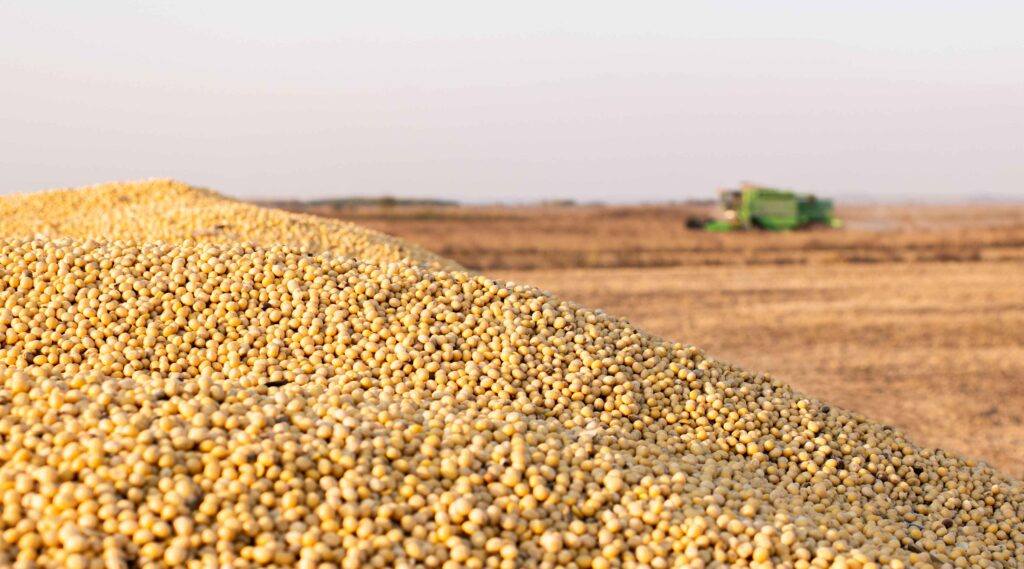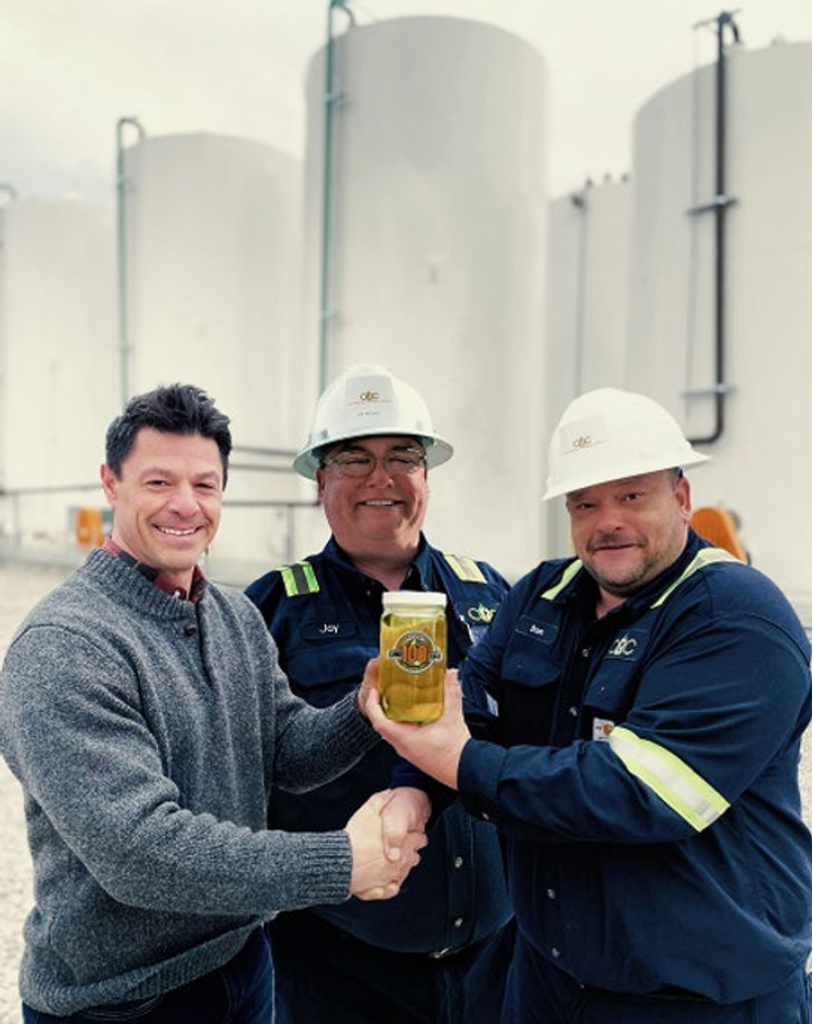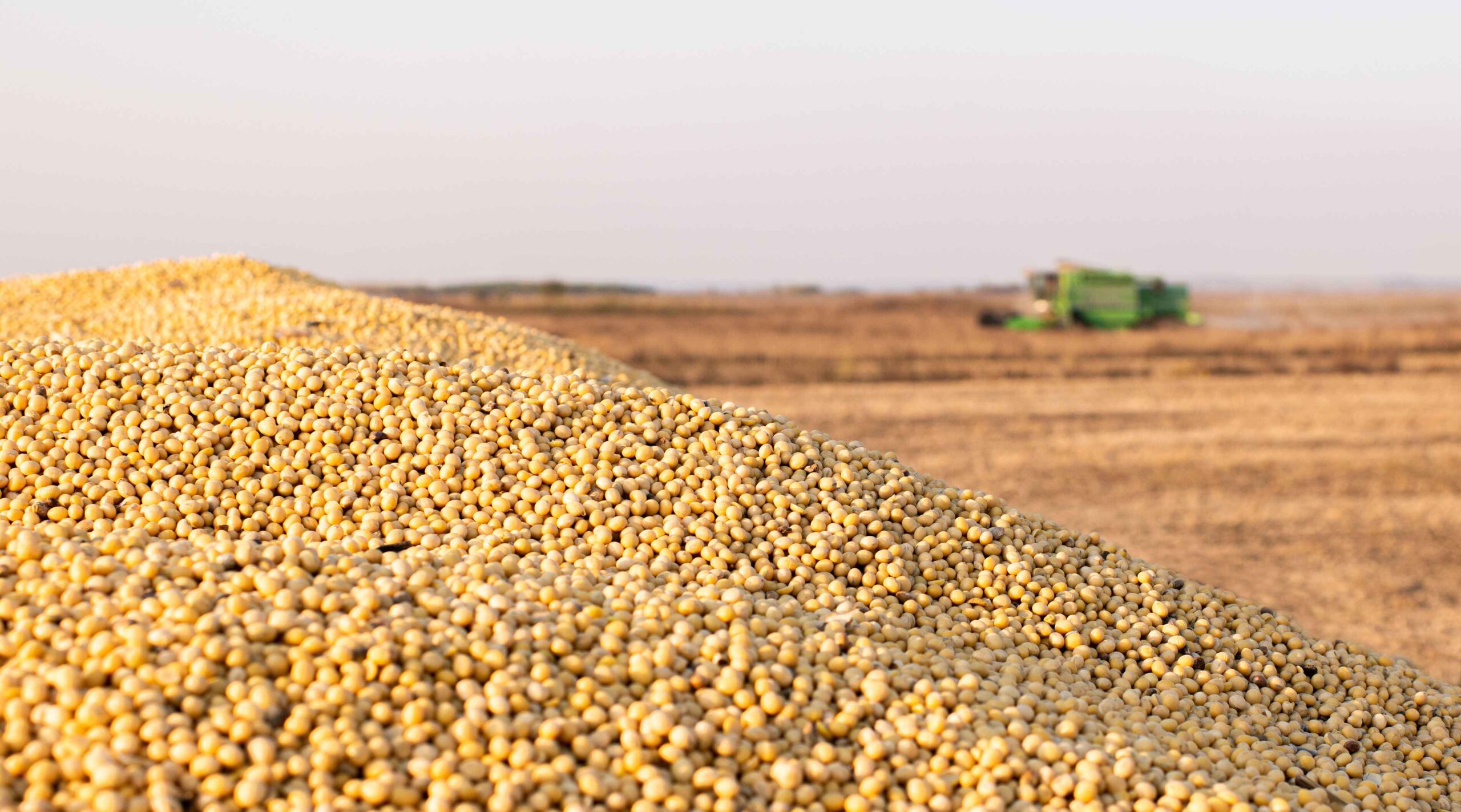
As soybean production increased in Kentucky over the last few decades, some producers were transporting their harvest hundreds of miles to reach feed mills and soybean crush plants to process their crops. But now, soy producers in central Kentucky have a mill much closer to their farms, thanks to Continental Refining Company’s recent AgriTech transformation in Somerset, Ky.
The 77-acre facility was originally built in 1932 as a crude oil refinery plant. But after the turn of the century, aging equipment and supply challenges threatened its production. The refinery shut down and changed hands several times before entrepreneur, Demetrios Haseotes, purchased the plant in 2011 under the name Continental Refining Company (CRC).
Haseotes invested millions to modernize the petroleum plant before idling again for economic and engineering studies of the facility and business model. These studies, completed in 2020, revealed a huge opportunity in soy-based biofuel production, based on the abundance of soybean farms in the region. To transform the aging refinery into a state-of-the-art soybean crush facility, CRC asked the Anderson Oilseed Division Team to design, install, and implement a solution to process raw soybeans into two primary products: high-protein meal for the animal feed industry, and high-quality oil for the food sector and industrial uses like biofuel.
Here’s a closer look at how Anderson partnered with CRC to bring this $31.5 million soybean crush plant to life.

The challenge of soybean crush
Soybeans are the most widely produced oilseeds in the world, and about 85% of them are processed to separate the oil from the solid meal. Soymeal, a rich source of protein and digestible energy, is the leading ingredient in animal feeds—in fact, 98% of the world’s soybean meal is fed to poultry, pigs, cattle, fish, and pets.
According to the Kentucky Soybean Board, the state’s animal agriculture sector consumed more than 650,000 tons of soybean meal in 2017. In the Central Kentucky region where CRC is based, local livestock consume an estimated 250,000 tons of soybean meal per year, plus more than 20,000 tons of soy hulls.
Unfortunately, as nutritional as soybeans can be, they also contain several anti-nutritional enzymes that can be toxic if consumed raw. These enzymes include urease, which can catalyze and cause ammonia toxicity, and trypsin inhibitors, which can impair protein digestion and nutrient utilization. To make soybean products safe for consumption, these enzymes must be properly deactivated with heat treatment to reduce the level of trypsin inhibitor units to less than 8,000 TIU per gram. However, excessive heat and extended cooking times can actually scorch the beans—destroying the proteins and diminishing the nutritional value of the final products.
To capitalize on this lucrative soybean crush market, CRC needed Anderson’s guidance to design a reliable mechanical processing plant that could produce high-quality oil and meal both safely and efficiently. Initially, CRC set a goal of processing 300 tons of soybeans per day while achieving residual oil levels under 8% and trypsin inhibitor levels under 8,000 TIU/g.
Download our case study about CRC’s mechanical soybean crush plant.
The solution: Anderson extrusion system
The Anderson Oilseed Division Team of Sales, Project Management and Engineering worked closely with CRC and their general contractor to design an efficient mechanical soybean crushing facility at the old refinery. Their top priorities for the project included safety, regulatory compliance, efficiency, and of course, consistent quality output.
After months of collaborative planning to develop conceptual, preliminary, and final designs, the CRC soybean crush facility finally broke ground in December 2021. The new processing plant consists of several strategic steps, including:
Inspection and storage
- Locally sourced soybeans are received, unloaded, and inspected. The quality of raw soybeans directly correlates to the profitability and operational efficiency of the plant. Proper storage, likewise, protects the quality of these raw materials with capacity in excess of one million bushels.
Seed cleaning
- From storage, soybeans are conveyed to a seed cleaner that removes debris like sticks, stones, leaves, and other foreign material that could damage the equipment and contaminate the products.
Pre-conditioning
- Clean soybeans are then pre-conditioned with heat to bring the moisture content and temperature down to consistent levels. Drying prepares the soybean material for pressing.
Cracking and dehulling
- Next, the dried soybeans are cracked to reduce the size of the particles and remove the abrasive outer shells, or hulls, to allow for easier oil recovery. Dehulling can maximize the profits of a soybean crush facility by offering many processing benefits. CRC offers these soy hulls to customers as a highly digestible source of fiber for livestock feed rations.
Dry extrusion
- Clean, dried, conditioned soybeans are then fed into the Anderson Dox™ Extruder, which uses mechanical energy to cook, dry, and shear oilseeds to prepare them for optimal pressing. The high-shear environment inside the extruder ruptures the oil-bearing cells of the soybeans while generating frictional heat. Like a pressure cooker, this heat deactivates harmful enzymes without degrading the quality of the proteins.
Mechanical pressing
- Finally, the extruded soybean material is fed into screw presses. These mechanical screw presses use brute force to crush the oil from the soybeans, using frictional heat and high pressure to separate the fats from the solids. This screw-pressed, chemical-free ECOMEAL™ is cooled and ground to meet the requirements of CRC’s customers, while the soybean oil undergoes filtering, clarification, and further processing, depending on its end use.
While the new soybean crush facility was being commissioned, the Anderson Oilseed Division Team and its Anderson Vendor Partners provided hands-on training to CRC’s team to ensure a smooth hand-off as the plant prepared to open.

From left, Kris Gibson, general manager and vice president of operations; Jay Kelley, biodiesel production manager; and Donald Rowe, lead field operator (Photo: Continental Refining Co.)
The results at CRC
About one year after the official groundbreaking ceremony, CRC’s new crushing facility commenced production in early 2023. Running a pair of Anderson Dox 1200 extruders and two screw presses, the plant has the capacity to process nearly four million bushels (84,000 tons) of soybeans per year, while its biodiesel refining division will generate up to five million gallons per year. At that rate, CRC can process 330 tons of raw soybeans to produce 250 tons of soybean meal each day, with the potential to expand production to over 500 tons per day.
By leveraging industry-leading equipment from Anderson International along with proven best practices in soybean handling and processing, CRC is exceeding its quality targets. On average, the soybean meal produced by CRC contains residual oil levels of 6% and trypsin inhibitor levels of 6,000 TIU/g—both well below the company’s initial requirements. This consistent quality output enables CRC to sell its proprietary line of screw-pressed soybean meal called UltraBlend SoyShield+ to supply local livestock farmers and feed mills.
Anderson’s high-shear extrusion system provides best-in-class oil returns with the lowest energy usage, at less than 50 kilowatt-hours per ton of soybean processed. Installing a Dox extruder upstream of a screw press doubles the capacity of the press and the life of the pressing parts, while reducing energy costs and improving oil recovery rates. This equates to the lowest total cost of ownership, as measured by uptime tonnage produced and energy consumed—positioning CRC for maximum profits as they capitalize on Central Kentucky’s growing soybean market.
Additionally, CRC’s new soybean crush plant will create as many as 36 jobs with an annual payroll totaling more than $2.65 million (including taxes and benefits), according to the company. The transformed processing facility is making a significant economic impact on the region, as it supports the local soybean supply chain with a sustainable processing solution.
To learn more, download Anderson’s guide to soybean processing.
